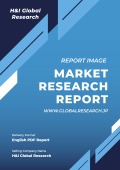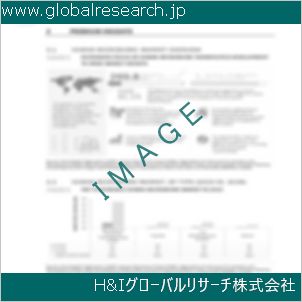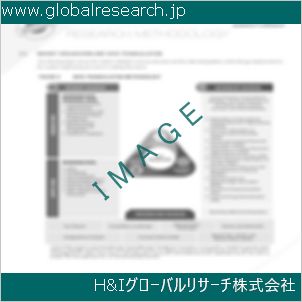1 Anti-Rust Preservative Market Overview
1.1 Product Definition
1.2 Anti-Rust Preservative Segment by Type
1.2.1 Global Anti-Rust Preservative Market Value Growth Rate Analysis by Type 2022 VS 2029
1.2.2 Oil Soluble
1.2.3 Water Soluble
1.3 Anti-Rust Preservative Segment by Application
1.3.1 Global Anti-Rust Preservative Market Value Growth Rate Analysis by Application: 2022 VS 2029
1.3.2 Industrial
1.3.3 Manufacturing
1.4 Global Market Growth Prospects
1.4.1 Global Anti-Rust Preservative Production Value Estimates and Forecasts (2018-2029)
1.4.2 Global Anti-Rust Preservative Production Capacity Estimates and Forecasts (2018-2029)
1.4.3 Global Anti-Rust Preservative Production Estimates and Forecasts (2018-2029)
1.4.4 Global Anti-Rust Preservative Market Average Price Estimates and Forecasts (2018-2029)
1.5 Assumptions and Limitations
2 Market Competition by Manufacturers
2.1 Global Anti-Rust Preservative Production Market Share by Manufacturers (2018-2023)
2.2 Global Anti-Rust Preservative Production Value Market Share by Manufacturers (2018-2023)
2.3 Global Key Players of Anti-Rust Preservative, Industry Ranking, 2021 VS 2022 VS 2023
2.4 Global Anti-Rust Preservative Market Share by Company Type (Tier 1, Tier 2 and Tier 3)
2.5 Global Anti-Rust Preservative Average Price by Manufacturers (2018-2023)
2.6 Global Key Manufacturers of Anti-Rust Preservative, Manufacturing Base Distribution and Headquarters
2.7 Global Key Manufacturers of Anti-Rust Preservative, Product Offered and Application
2.8 Global Key Manufacturers of Anti-Rust Preservative, Date of Enter into This Industry
2.9 Anti-Rust Preservative Market Competitive Situation and Trends
2.9.1 Anti-Rust Preservative Market Concentration Rate
2.9.2 Global 5 and 10 Largest Anti-Rust Preservative Players Market Share by Revenue
2.10 Mergers & Acquisitions, Expansion
3 Anti-Rust Preservative Production by Region
3.1 Global Anti-Rust Preservative Production Value Estimates and Forecasts by Region: 2018 VS 2022 VS 2029
3.2 Global Anti-Rust Preservative Production Value by Region (2018-2029)
3.2.1 Global Anti-Rust Preservative Production Value Market Share by Region (2018-2023)
3.2.2 Global Forecasted Production Value of Anti-Rust Preservative by Region (2024-2029)
3.3 Global Anti-Rust Preservative Production Estimates and Forecasts by Region: 2018 VS 2022 VS 2029
3.4 Global Anti-Rust Preservative Production by Region (2018-2029)
3.4.1 Global Anti-Rust Preservative Production Market Share by Region (2018-2023)
3.4.2 Global Forecasted Production of Anti-Rust Preservative by Region (2024-2029)
3.5 Global Anti-Rust Preservative Market Price Analysis by Region (2018-2023)
3.6 Global Anti-Rust Preservative Production and Value, Year-over-Year Growth
3.6.1 North America Anti-Rust Preservative Production Value Estimates and Forecasts (2018-2029)
3.6.2 Europe Anti-Rust Preservative Production Value Estimates and Forecasts (2018-2029)
3.6.3 China Anti-Rust Preservative Production Value Estimates and Forecasts (2018-2029)
3.6.4 Japan Anti-Rust Preservative Production Value Estimates and Forecasts (2018-2029)
4 Anti-Rust Preservative Consumption by Region
4.1 Global Anti-Rust Preservative Consumption Estimates and Forecasts by Region: 2018 VS 2022 VS 2029
4.2 Global Anti-Rust Preservative Consumption by Region (2018-2029)
4.2.1 Global Anti-Rust Preservative Consumption by Region (2018-2023)
4.2.2 Global Anti-Rust Preservative Forecasted Consumption by Region (2024-2029)
4.3 North America
4.3.1 North America Anti-Rust Preservative Consumption Growth Rate by Country: 2018 VS 2022 VS 2029
4.3.2 North America Anti-Rust Preservative Consumption by Country (2018-2029)
4.3.3 United States
4.3.4 Canada
4.4 Europe
4.4.1 Europe Anti-Rust Preservative Consumption Growth Rate by Country: 2018 VS 2022 VS 2029
4.4.2 Europe Anti-Rust Preservative Consumption by Country (2018-2029)
4.4.3 Germany
4.4.4 France
4.4.5 U.K.
4.4.6 Italy
4.4.7 Russia
4.5 Asia Pacific
4.5.1 Asia Pacific Anti-Rust Preservative Consumption Growth Rate by Region: 2018 VS 2022 VS 2029
4.5.2 Asia Pacific Anti-Rust Preservative Consumption by Region (2018-2029)
4.5.3 China
4.5.4 Japan
4.5.5 South Korea
4.5.6 China Taiwan
4.5.7 Southeast Asia
4.5.8 India
4.6 Latin America, Middle East & Africa
4.6.1 Latin America, Middle East & Africa Anti-Rust Preservative Consumption Growth Rate by Country: 2018 VS 2022 VS 2029
4.6.2 Latin America, Middle East & Africa Anti-Rust Preservative Consumption by Country (2018-2029)
4.6.3 Mexico
4.6.4 Brazil
4.6.5 Turkey
5 Segment by Type
5.1 Global Anti-Rust Preservative Production by Type (2018-2029)
5.1.1 Global Anti-Rust Preservative Production by Type (2018-2023)
5.1.2 Global Anti-Rust Preservative Production by Type (2024-2029)
5.1.3 Global Anti-Rust Preservative Production Market Share by Type (2018-2029)
5.2 Global Anti-Rust Preservative Production Value by Type (2018-2029)
5.2.1 Global Anti-Rust Preservative Production Value by Type (2018-2023)
5.2.2 Global Anti-Rust Preservative Production Value by Type (2024-2029)
5.2.3 Global Anti-Rust Preservative Production Value Market Share by Type (2018-2029)
5.3 Global Anti-Rust Preservative Price by Type (2018-2029)
6 Segment by Application
6.1 Global Anti-Rust Preservative Production by Application (2018-2029)
6.1.1 Global Anti-Rust Preservative Production by Application (2018-2023)
6.1.2 Global Anti-Rust Preservative Production by Application (2024-2029)
6.1.3 Global Anti-Rust Preservative Production Market Share by Application (2018-2029)
6.2 Global Anti-Rust Preservative Production Value by Application (2018-2029)
6.2.1 Global Anti-Rust Preservative Production Value by Application (2018-2023)
6.2.2 Global Anti-Rust Preservative Production Value by Application (2024-2029)
6.2.3 Global Anti-Rust Preservative Production Value Market Share by Application (2018-2029)
6.3 Global Anti-Rust Preservative Price by Application (2018-2029)
7 Key Companies Profiled
7.1 Shanghai Minglan Chemical Co., Ltd.
7.1.1 Shanghai Minglan Chemical Co., Ltd. Anti-Rust Preservative Corporation Information
7.1.2 Shanghai Minglan Chemical Co., Ltd. Anti-Rust Preservative Product Portfolio
7.1.3 Shanghai Minglan Chemical Co., Ltd. Anti-Rust Preservative Production, Value, Price and Gross Margin (2018-2023)
7.1.4 Shanghai Minglan Chemical Co., Ltd. Main Business and Markets Served
7.1.5 Shanghai Minglan Chemical Co., Ltd. Recent Developments/Updates
7.2 Afton Chemical
7.2.1 Afton Chemical Anti-Rust Preservative Corporation Information
7.2.2 Afton Chemical Anti-Rust Preservative Product Portfolio
7.2.3 Afton Chemical Anti-Rust Preservative Production, Value, Price and Gross Margin (2018-2023)
7.2.4 Afton Chemical Main Business and Markets Served
7.2.5 Afton Chemical Recent Developments/Updates
7.3 Lanxess
7.3.1 Lanxess Anti-Rust Preservative Corporation Information
7.3.2 Lanxess Anti-Rust Preservative Product Portfolio
7.3.3 Lanxess Anti-Rust Preservative Production, Value, Price and Gross Margin (2018-2023)
7.3.4 Lanxess Main Business and Markets Served
7.3.5 Lanxess Recent Developments/Updates
7.4 Jinzhou Kangtai Lubricant Additives
7.4.1 Jinzhou Kangtai Lubricant Additives Anti-Rust Preservative Corporation Information
7.4.2 Jinzhou Kangtai Lubricant Additives Anti-Rust Preservative Product Portfolio
7.4.3 Jinzhou Kangtai Lubricant Additives Anti-Rust Preservative Production, Value, Price and Gross Margin (2018-2023)
7.4.4 Jinzhou Kangtai Lubricant Additives Main Business and Markets Served
7.4.5 Jinzhou Kangtai Lubricant Additives Recent Developments/Updates
7.5 BASF
7.5.1 BASF Anti-Rust Preservative Corporation Information
7.5.2 BASF Anti-Rust Preservative Product Portfolio
7.5.3 BASF Anti-Rust Preservative Production, Value, Price and Gross Margin (2018-2023)
7.5.4 BASF Main Business and Markets Served
7.5.5 BASF Recent Developments/Updates
7.6 BRB International
7.6.1 BRB International Anti-Rust Preservative Corporation Information
7.6.2 BRB International Anti-Rust Preservative Product Portfolio
7.6.3 BRB International Anti-Rust Preservative Production, Value, Price and Gross Margin (2018-2023)
7.6.4 BRB International Main Business and Markets Served
7.6.5 BRB International Recent Developments/Updates
7.7 Lubrizol
7.7.1 Lubrizol Anti-Rust Preservative Corporation Information
7.7.2 Lubrizol Anti-Rust Preservative Product Portfolio
7.7.3 Lubrizol Anti-Rust Preservative Production, Value, Price and Gross Margin (2018-2023)
7.7.4 Lubrizol Main Business and Markets Served
7.7.5 Lubrizol Recent Developments/Updates
7.8 TotalEnergies
7.8.1 TotalEnergies Anti-Rust Preservative Corporation Information
7.8.2 TotalEnergies Anti-Rust Preservative Product Portfolio
7.8.3 TotalEnergies Anti-Rust Preservative Production, Value, Price and Gross Margin (2018-2023)
7.8.4 TotalEnergies Main Business and Markets Served
7.7.5 TotalEnergies Recent Developments/Updates
7.9 Vanderbilt
7.9.1 Vanderbilt Anti-Rust Preservative Corporation Information
7.9.2 Vanderbilt Anti-Rust Preservative Product Portfolio
7.9.3 Vanderbilt Anti-Rust Preservative Production, Value, Price and Gross Margin (2018-2023)
7.9.4 Vanderbilt Main Business and Markets Served
7.9.5 Vanderbilt Recent Developments/Updates
7.10 Chevron Oronite
7.10.1 Chevron Oronite Anti-Rust Preservative Corporation Information
7.10.2 Chevron Oronite Anti-Rust Preservative Product Portfolio
7.10.3 Chevron Oronite Anti-Rust Preservative Production, Value, Price and Gross Margin (2018-2023)
7.10.4 Chevron Oronite Main Business and Markets Served
7.10.5 Chevron Oronite Recent Developments/Updates
7.11 ROVAL
7.11.1 ROVAL Anti-Rust Preservative Corporation Information
7.11.2 ROVAL Anti-Rust Preservative Product Portfolio
7.11.3 ROVAL Anti-Rust Preservative Production, Value, Price and Gross Margin (2018-2023)
7.11.4 ROVAL Main Business and Markets Served
7.11.5 ROVAL Recent Developments/Updates
7.12 Tianhe Chemicals Group Limited
7.12.1 Tianhe Chemicals Group Limited Anti-Rust Preservative Corporation Information
7.12.2 Tianhe Chemicals Group Limited Anti-Rust Preservative Product Portfolio
7.12.3 Tianhe Chemicals Group Limited Anti-Rust Preservative Production, Value, Price and Gross Margin (2018-2023)
7.12.4 Tianhe Chemicals Group Limited Main Business and Markets Served
7.12.5 Tianhe Chemicals Group Limited Recent Developments/Updates
7.13 Infineum
7.13.1 Infineum Anti-Rust Preservative Corporation Information
7.13.2 Infineum Anti-Rust Preservative Product Portfolio
7.13.3 Infineum Anti-Rust Preservative Production, Value, Price and Gross Margin (2018-2023)
7.13.4 Infineum Main Business and Markets Served
7.13.5 Infineum Recent Developments/Updates
7.14 Evonik Industries
7.14.1 Evonik Industries Anti-Rust Preservative Corporation Information
7.14.2 Evonik Industries Anti-Rust Preservative Product Portfolio
7.14.3 Evonik Industries Anti-Rust Preservative Production, Value, Price and Gross Margin (2018-2023)
7.14.4 Evonik Industries Main Business and Markets Served
7.14.5 Evonik Industries Recent Developments/Updates
8 Industry Chain and Sales Channels Analysis
8.1 Anti-Rust Preservative Industry Chain Analysis
8.2 Anti-Rust Preservative Key Raw Materials
8.2.1 Key Raw Materials
8.2.2 Raw Materials Key Suppliers
8.3 Anti-Rust Preservative Production Mode & Process
8.4 Anti-Rust Preservative Sales and Marketing
8.4.1 Anti-Rust Preservative Sales Channels
8.4.2 Anti-Rust Preservative Distributors
8.5 Anti-Rust Preservative Customers
9 Anti-Rust Preservative Market Dynamics
9.1 Anti-Rust Preservative Industry Trends
9.2 Anti-Rust Preservative Market Drivers
9.3 Anti-Rust Preservative Market Challenges
9.4 Anti-Rust Preservative Market Restraints
10 Research Finding and Conclusion
11 Methodology and Data Source
11.1 Methodology/Research Approach
11.1.1 Research Programs/Design
11.1.2 Market Size Estimation
11.1.3 Market Breakdown and Data Triangulation
11.2 Data Source
11.2.1 Secondary Sources
11.2.2 Primary Sources
11.3 Author List
11.4 Disclaimer
| ※参考情報 防錆防腐剤は、金属や他の材料を腐食や錆から保護するための化学物質や製品を指します。これらの剤は、特に鉄や鋼などの金属製品に広く使用されており、外的条件からの保護を提供することによって、材料の寿命を延ばし、性能を維持することができます。 防錆防腐剤の基本的な概念は、使用される材料や設置される環境によって異なる特性を持つことです。防腐剤は一般的に、金属の表面に保護層を形成することにより、酸素や水分といった腐食因子との接触を防ぎます。この保護層は、物理的なバリアとして機能することもあれば、化学反応によって金属の表面に安定した保護層を生成することでも作用します。 防錆防腐剤にはさまざまな種類があります。例えば、油性や水性の製品、スプレーや液体、ペーストなど、用途に応じて様々な形状で提供されます。一般的な防錆効果を持つ製品には、オイルやワックス、塗料などがあります。これらは金属表面に薄い膜を形成し、外部の湿気や酸素から金属を防護します。 防錆防腐剤の特徴としては、耐候性や耐水性、耐薬品性といった物理的特性に加えて、適用が簡単であることや、質感や外観を損なわないものであることが挙げられます。さらに、これらの製品は一般に低毒性であり、安全に使用できることも重視されています。 用途に関しては、防錆防腐剤は家庭用から産業用、さらには自動車、航空機、建設用設備など、非常に多岐にわたります。家庭では、工具や機械部品、金属製の家具などに使用され、これらの寿命を延ばす助けとなります。産業現場では、製造プロセスにおいて金属部品を保護するために使用され、かつ重機や建材の保護にも役立ちます。また、自動車や航空機のような高価な設備においては、性能と安全性を維持するために必須の製品となります。 関連技術として、電気化学的な防錆技術や、代替素材の開発もあり、これらは従来の防錆防腐剤に代わる新たなアプローチとして注目されています。例えば、亜鉛メッキや電気めっき、さらにはコーティング技術の進化により、より効果的かつ持続可能な防腐対策が求められています。 防錆防腐剤の選定は、対象とする材料の種類や使用環境に応じた適切な製品を選ぶことが重要です。例えば、海洋環境や湿気の多い地域では、特に耐腐食性の高い製品が推奨されます。また、高温や高圧の条件下では、特定の化学物質に耐えられる製品が必要となります。これらの要素を考慮することで、防錆防腐剤の効果を最大限に引き出すことが可能です。 最後に、防錆防腐剤の市場は年々拡大しており、環境に優しい製品の需要が高まると共に、持続可能な開発が求められています。今後も新技術や新しい素材の登場により、防錆防腐剤の性能や環境適合性は一層向上すると予想されます。防錆防腐剤は、あらゆる産業分野において欠かせない存在であり、適切な選定と使用が重要です。 |
❖ 免責事項 ❖
http://www.globalresearch.jp/disclaimer












